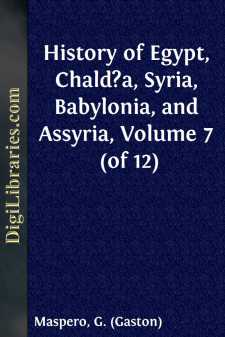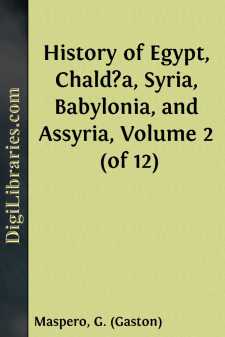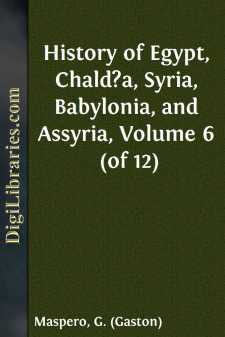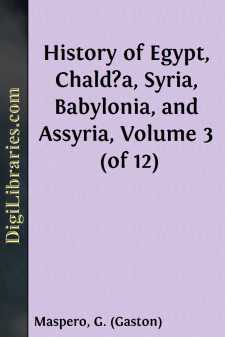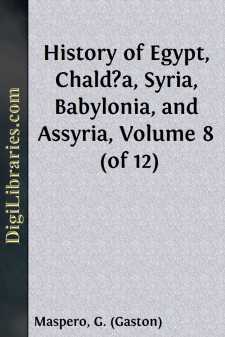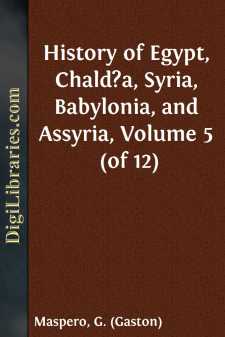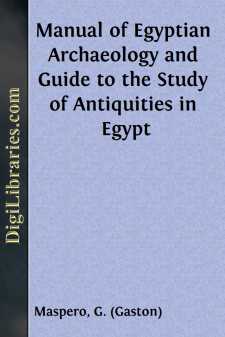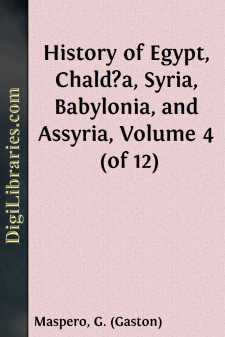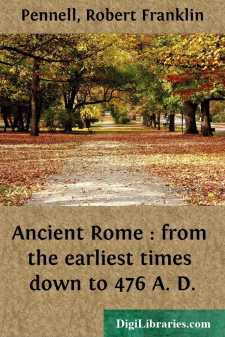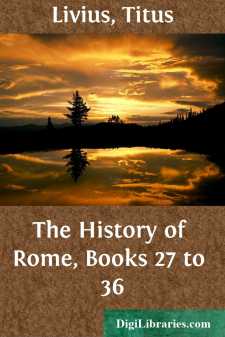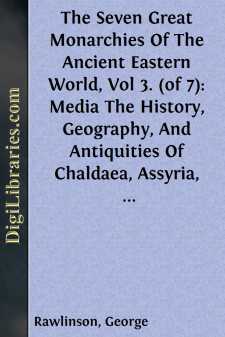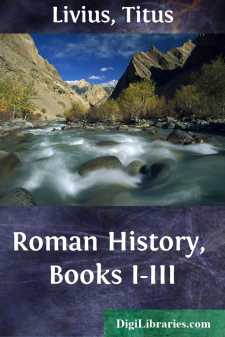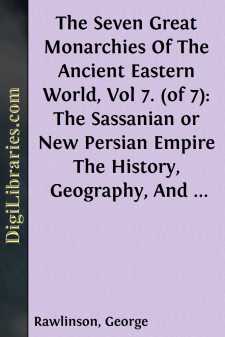Categories
- Antiques & Collectibles 13
- Architecture 36
- Art 48
- Bibles 22
- Biography & Autobiography 813
- Body, Mind & Spirit 142
- Business & Economics 28
- Children's Books 16
- Children's Fiction 13
- Computers 4
- Cooking 94
- Crafts & Hobbies 4
- Drama 346
- Education 46
- Family & Relationships 57
- Fiction 11829
- Games 19
- Gardening 17
- Health & Fitness 34
- History 1377
- House & Home 1
- Humor 147
- Juvenile Fiction 1873
- Juvenile Nonfiction 202
- Language Arts & Disciplines 88
- Law 16
- Literary Collections 686
- Literary Criticism 179
- Mathematics 13
- Medical 41
- Music 40
- Nature 179
- Non-Classifiable 1768
- Performing Arts 7
- Periodicals 1453
- Philosophy 64
- Photography 2
- Poetry 896
- Political Science 203
- Psychology 42
- Reference 154
- Religion 513
- Science 126
- Self-Help 84
- Social Science 81
- Sports & Recreation 34
- Study Aids 3
- Technology & Engineering 59
- Transportation 23
- Travel 463
- True Crime 29
History of Egypt, Chald?a, Syria, Babylonia, and Assyria, Volume 7 (of 12)
Description:
Excerpt
CHAPTER I—THE ASSYRIAN REVIVAL AND THE STRUGGLE FOR SYRIA
Assur-nazir-pal (885-860) and Shalmaneser III. (860-825)—The kingdom of Urartu and its conquering princes: Menuas and Argistis.
Assyria was the first to reappear on the scene of action. Less hampered by an ancient past than Egypt and Chaldæa, she was the sooner able to recover her strength after any disastrous crisis, and to assume again the offensive along the whole of her frontier line.
Image Drawn by Faucher-Gudin, from a bas-relief at Koyunjik
of the time of Sennacherib. The initial cut, which is also
by Faucher-Gudin, represents the broken obelisk of Assur-
nazir-pal, the bas-reliefs of which are as yet unpublished.
During the years immediately following the ephemeral victories and reverses of Assurirba, both the country and its rulers are plunged in the obscurity of oblivion. Two figures at length, though at what date is uncertain, emerge from the darkness—a certain Irbarammân and an Assur-nadinakhê II., whom we find engaged in building palaces and making a necropolis. They were followed towards 950 by a Tiglath-pileser II., of whom nothing is known but his name.* He in his turn was succeeded about the year 935 by one Assurdân II., who appears to have concentrated his energies upon public works, for we hear of him digging a canal to supply his capital with water, restoring the temples and fortifying towns. Kammân-nirâri III., who followed him in 912, stands out more distinctly from the mists which envelop the history of this period; he repaired the gate of the Tigris and the adjoining wall at Assur, he enlarged its principal sanctuary, reduced several rebellious provinces to obedience, and waged a successful warfare against the neighbouring inhabitants of Karduniash. Since the extinction of the race of Nebuchadrezzar I., Babylon had been a prey to civil discord and foreign invasion. The Aramaean tribes mingled with, or contiguous to the remnants of the Cossoans bordering on the Persian gulf, constituted possibly, even at this period, the powerful nation of the Kaldâ.**
* Our only knowledge of Tiglath-pileser II. is from a brick,
on which he is mentioned as being the grandfather of Rammân-
nirâri II.
** The names Chaldæa and Chaldæans being ordinarily used to
designate the territory and people of Babylon, I shall
employ the term Kaldu or Kaldâ in treating of the Aramæan
tribes who constituted the actual Chaldæan nation.
It has been supposed, not without probability, that a certain Simashshikhu, Prince of the Country of the Sea, who immediately followed the last scion of the line of Pashê,* was one of their chiefs. He endeavoured to establish order in the city, and rebuilt the temple of the Sun destroyed by the nomads at Sippar, but at the end of eighteen years he was assassinated. His son Eâmukinshurnu remained at the head of affairs some three to six months; Kashshu-nadinakhê ruled three or six years, at the expiration of which a man of the house of Bâzi, Eulbar-shakinshumi by name, seized upon the crown.** His dynasty consisted of three members, himself included, and it was overthrown after a duration of twenty years by an Elamite, who held authority for another seven.***
* The name of this prince has been read Simbarshiku by
Peiser, a reading adopted by Rost; Simbarshiku would have
been shortened into Sibir, and we should have to identify it
with that of the Sibir mentioned by Assur-nazir-pal in his
Annals, col....


